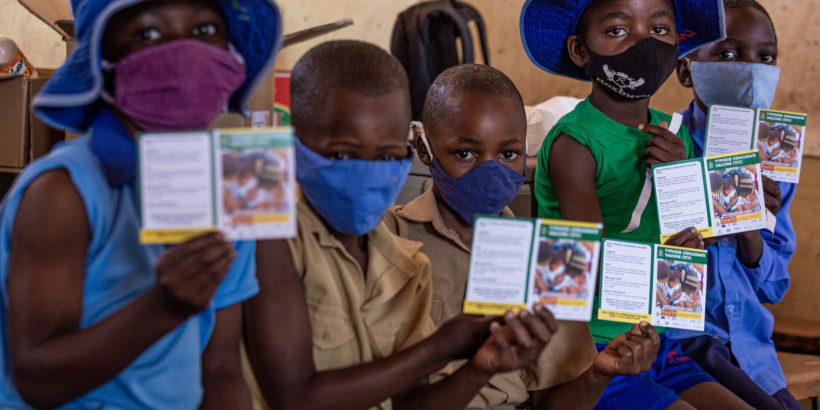In many ways, 2017 may seem like a lifetime ago; yet our world has changed drastically. Most notably, our current daily routines have been changed by COVID-19, altering the way we work, travel, gather, and live. Looking back, 2017 was a monumental year for typhoid conjugate vaccines (TCV), which made remarkable strides as detailed in a recent publication in The Journal of Infectious Diseases.
The TCV policy landscape
In October 2017, the Strategic Advisory Group of Experts (SAGE) on Immunization reviewed the available data and safety profile for a new TCV and supported its use in endemic settings. A funding envelope from Gavi, the Vaccine Alliance, soon followed in November 2017. Before the year ended, the World Health Organization (WHO) prequalified Typbar-TCV®. In just three months, the potential to vaccinate children younger than two years old as part of routine immunization went from non-existent to overwhelmingly possible.
The floodgates for TCV introduction into routine immunization flew open the following year. In March 2018, WHO recommended that TCV be introduced in endemic countries and prioritized in those with high burdens of disease or drug-resistant typhoid. The Global Advisory Committee on Vaccine Safety also confirmed support for TCV. By the end of 2018, the global stars had aligned and the opportunities for national decision-makers to consider TCV introduction was a reality.
Progress in country TCV introduction
In the years since, the collective global work on typhoid and TCV has only picked up pace. In early 2018, a typhoid outbreak in Pakistan with a high level of drug-resistant cases led government officials to utilize TCV as part of their emergency outbreak response. Later that year, officials in Zimbabwe employed a similar control strategy using TCV. Not long after, in November 2019, Pakistan became the first country to introduce TCV into the national routine immunization program. To date, nearly 30 million children have been vaccinated. Early in 2021, Liberia and Zimbabwe became the first and second African countries, respectively, to introduce TCV. Samoa kicked off TCV introduction in the Western Pacific region in August 2021.
Data to help inform introduction decisions
Typhoid research and surveillance have continued in earnest in the past three years, including work from the STRATAA project, and the SEAP and SETA projects. Data from these projects provide some of the foundational burden estimates for endemic countries considering TCV introduction.
TCV efficacy studies in Bangladesh, Malawi, and Nepal that started in 2017 have now produced robust data about TCV in real-world community settings and confirm exceptional TCV efficacy and safety. TyVAC studies in Burkina Faso confirmed that TCV can safely be co-administered with meningococcal A and yellow fever vaccines, both important considerations when making new vaccine introduction decisions.
Continuing the momentum
The past four years have clearly laid the foundation for the work we have ahead. We know that TCV is a safe, well-tolerated, and efficacious vaccine that can protect children as young as 9 months of age in Africa and Asia. The available data and evidence strongly support efforts to introduce TCV into routine immunization programs. The work to support national stakeholders with the decision-making process must continue in earnest.
We must recognize that as our world continues to evolve, migration, urbanization, and climate change may alter the environment in which we live. The good news is that we can protect children in typhoid-endemic countries by making TCV accessible in routine childhood immunization programs. TCV is a proven intervention to reduce typhoid mortality, combat drug-resistance, and decrease the burden of typhoid. We must focus our efforts on improving national TCV introduction to ensure that where a child lives does not impact their susceptibility to typhoid. By ensuring strong global TCV coverage, and working to make TCV widely available, we minimize a child’s risk of typhoid, offering protection for wherever they call home.
Photo: PATH/ Kudzai Tinago.



